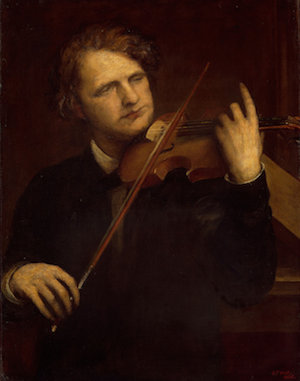
Once, in a conversation with the mother of a talented, but over-extended student — one who stacked up the extra-curricular activities like cordwood, as they say in Maine — I worried that my student didn’t have enough time to practice. The reply: “Oh, but she can practice in the car!”
Indeed, all that driving around: to chess club, riding lessons, violin lessons; to youth symphony rehearsals, piano lessons, Mandarin classes, and yes, voice lessons certainly gives a gal some quality time in the car. “But if she’s going to practice in the car,” I told her mother, “it should be violin.”
Needless to say, she looked at me like I was nuts. Come on! How are you supposed to practice violin while strapped in a car seat? How do you avoid continually jabbing the roof with your bow tip? Isn’t it a bad idea to have your instrument out in a moving vehicle, where any unconstrained item may turn into a projectile the moment things go south? And what about distraction? In 2013, roughly 512 people per day were involved in motor vehicle accidents in Minnesota. Just imagine how much worse it would be if we had a driving-while-fiddling epidemic!
Ah, but you say, “The voice is a hands-free instrument, perfectly suited to the car.”
In truth, I have nothing against singing in the car. I do it all the time. But I don’t practice there. For one thing, those bucket seats leave me feeling like I can barely breathe, as if my lungs were a bunch of rubber bands stuffed in a box. Second of all, the city where I live, like most cities around the world, is filled with people who spend way too much time in their cars. They hurtle around at high speeds; they’re late, they’re angry, and they’re right behind you. This may be a great time to belt out your favorite ditties, laced with expletives as people cut you off or tailgate, but is it really the time to transform your relationship with your voice?
But let’s forget the crazy drivers for a moment and go back to bucket seats and rubber bands.
Our bodies are filled with tissues with elastic qualities. What exactly does this mean?

When you stretch a rubber band, you are temporarily converting some of the movement energy you needed to stretch out the band into elastic potential. The band, when released, will return to its original shape, and in the process convert its elastic potential back into movement.
In our bodies, this interplay between movement driven by our muscles and movement driven by the elastic recoil of our connective tissues can make life a lot easier for us, if we’ll let it.
So where are these fabled rubber-band-like tissues of the body? Everywhere. Your ribs, for instance, will change their shape with a deep inhale, and then fuel part of the exhale with their elastic recoil. Feel it! Take a deep breath, and exhale on a hiss, without pushing. You’ll notice that you can exhale for quite a while before the abdominal muscles have to kick in. Thanks, elastic ribs!
Funny how we use elastic metaphors to describe the over-extended life. Someone who is stretched too thin might snap or even reach a breaking point. (Then perhaps she’ll rebound.) If you’re going to prime the great big rubber band that is your life, make sure you get to enjoy the recoil, the moment when you are flung across space in a way that seems effortless.
Meanwhile, practice in your body. You have an opportunity with every breath.